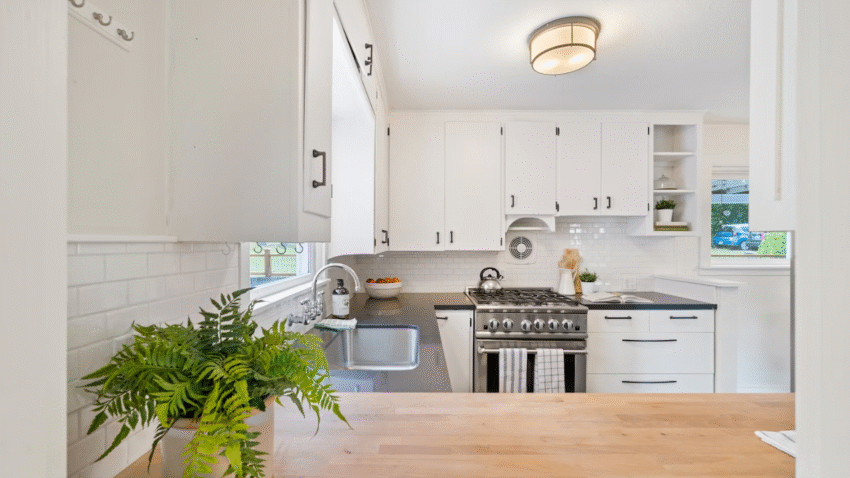Introduction
Blenders are kitchen workhorses—from smoothies and soups to sauces and salsas. But once the blending is done, cleaning can feel like a chore—especially when sticky residue clings to the blades. In this complete guide, you’ll learn how to clean a blender easily and effectively, so it’s always ready for your next creation. Tired of scrubbing under sharp blades or dealing with lingering odors? There’s a faster, safer way—and it only takes a minute.
Why Cleaning Your Blender Properly Matters
Leaving a blender dirty for too long allows food residue to harden, bacteria to build up, and odors to form—especially in the hard-to-reach areas around the blade and lid. Regular, proper cleaning:
- Prevents staining and food buildup
- Keeps blades sharp and functioning well
- Eliminates bacteria and mold risk
- Maintains fresh flavor with every use
- Extends the life of your appliance
Whether you use your blender daily or once a week, quick and consistent cleaning makes all the difference.
Step-by-Step Guide to Cleaning a Blender Easily
Let’s walk through the quickest and most effective way to clean your blender—plus tips for tackling tougher messes.
1. Rinse Immediately After Use
Right after you pour out your blend, give the jar a quick rinse under warm water. This prevents food from drying onto the sides or blades.
Kitchen Tip: Avoid letting your blender sit with leftover residue—it only gets harder to clean.
2. Use the “Self-Cleaning” Method (1-Minute Trick)
This method works on nearly every blender, including high-powered models like Vitamix, Ninja, or NutriBullet.
Here’s how:
- Fill the blender halfway with warm water
- Add a few drops of dish soap
- Secure the lid
- Blend on high for 30–60 seconds
- Pour out the soapy water
- Rinse thoroughly with clean water
Pro Tip: This method cleans under the blades without needing to disassemble the jar—safe and fast!
3. Clean the Lid, Tamper, and Gasket
Don’t forget the removable parts.
- Rinse the lid and tamper with warm, soapy water
- Use a sponge or brush to get into crevices
- If your blender has a removable rubber gasket or sealing ring, take it out and clean separately—this is where food and mold can hide
Reminder: These parts are often dishwasher-safe, but check your model’s manual to confirm.
4. Deep Clean for Sticky or Stained Blenders
If your blender smells or has leftover residue (from nut butters, thick smoothies, or curry sauces), try this deeper clean.
Option 1: Baking Soda Paste
- Mix baking soda with water to make a paste
- Apply inside the blender jar and let sit for 15 minutes
- Scrub gently with a soft sponge
- Rinse thoroughly
Option 2: Vinegar Soak
- Fill the jar halfway with equal parts white vinegar and warm water
- Let sit for 1 hour
- Blend for 30 seconds, then rinse
Bonus: Both methods also deodorize and remove discoloration.
5. Tackle Stuck-On Blades
Sometimes food gets stuck under or around the blades. Here’s how to deal with it safely:
- Fill the jar with warm water and dish soap
- Let it soak for 30 minutes
- Use a bottle brush or toothbrush to gently scrub under the blades
- Never reach your fingers near sharp blades—use long-handled brushes instead
Safety Note: Unplug the blender before doing any detailed cleaning near the blades.
6. Dry Thoroughly Before Storing
Once clean:
- Let the blender jar air dry upside down on a rack or towel
- Wipe down the base with a damp cloth (never immerse it in water)
- Reassemble only once everything is completely dry
Moisture trapped in parts like the lid or gasket can lead to mold or odors over time.
Common Mistakes to Avoid
Don’t let a few avoidable habits ruin your blender or your food. Watch for these:
Mistake 1: Letting Blended Food Sit
Solution: Rinse and clean immediately after use—even a quick water rinse helps prevent stuck-on messes.
Mistake 2: Using Abrasive Sponges
Solution: Avoid scouring pads that can scratch plastic jars. Use soft sponges or brushes instead.
Mistake 3: Submerging the Base
Solution: The motor base should never be put in water. Always clean with a damp cloth only.
Mistake 4: Forgetting the Gasket or Lid Crevices
Solution: These areas trap food and bacteria. Always clean them thoroughly after each use.
Mistake 5: Skipping Weekly Deep Cleans
Solution: Do a deeper clean with vinegar or baking soda at least once a week, especially if you use your blender often.
Extra Tips & Kitchen Hacks
Here are a few ways to make blender cleaning even easier and more effective:
1. Use Lemon for Natural Deodorizing
Add a wedge of lemon with water and blend for 30 seconds. This freshens the jar and removes lingering smells.
2. Keep a Bottle Brush Handy
A long-handled bottle brush reaches under blades and into corners better than a sponge.
3. Avoid Dishwasher Heat on Plastic Jars
High heat can cloud plastic blender jars. If dishwasher-safe, place them on the top rack only—or hand wash when possible.
4. Make It a Habit
Build blender cleaning into your cooking routine. Just 1 minute of care after each use keeps your blender spotless long-term.
Related task to check next: [How to Sharpen Kitchen Knives at Home]
Conclusion
A clean blender is essential for smooth blends, fresh flavors, and long appliance life. Luckily, it doesn’t have to be a hassle. With a rinse, a little soapy water, and smart habits, you can clean your blender quickly and safely after every use.
Let’s recap:
- Rinse right after using
- Use the self-clean method with soap and warm water
- Don’t forget the lid, gasket, and crevices
- Deep clean weekly with vinegar or baking soda
- Always dry fully before reassembling or storing
✅ Bookmark this guide and keep your blender sparkling clean, ready for your next smoothie, soup, or sauce!
